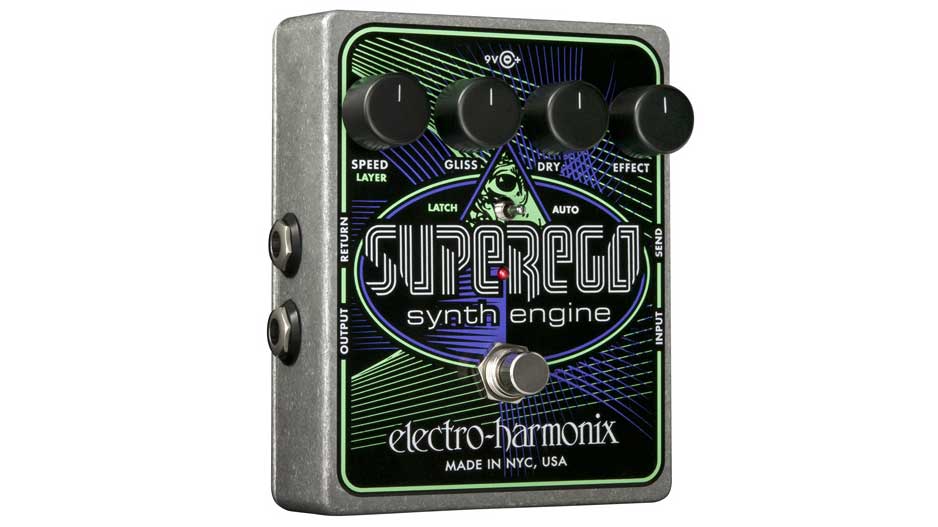Mogwai's career in gear: "We've got drawers full of pedals and we'll just try them until something sounds good"
Stuart Braithwaite on the instrumental icons' ever-expanding arsenal of guitars, amps and effects
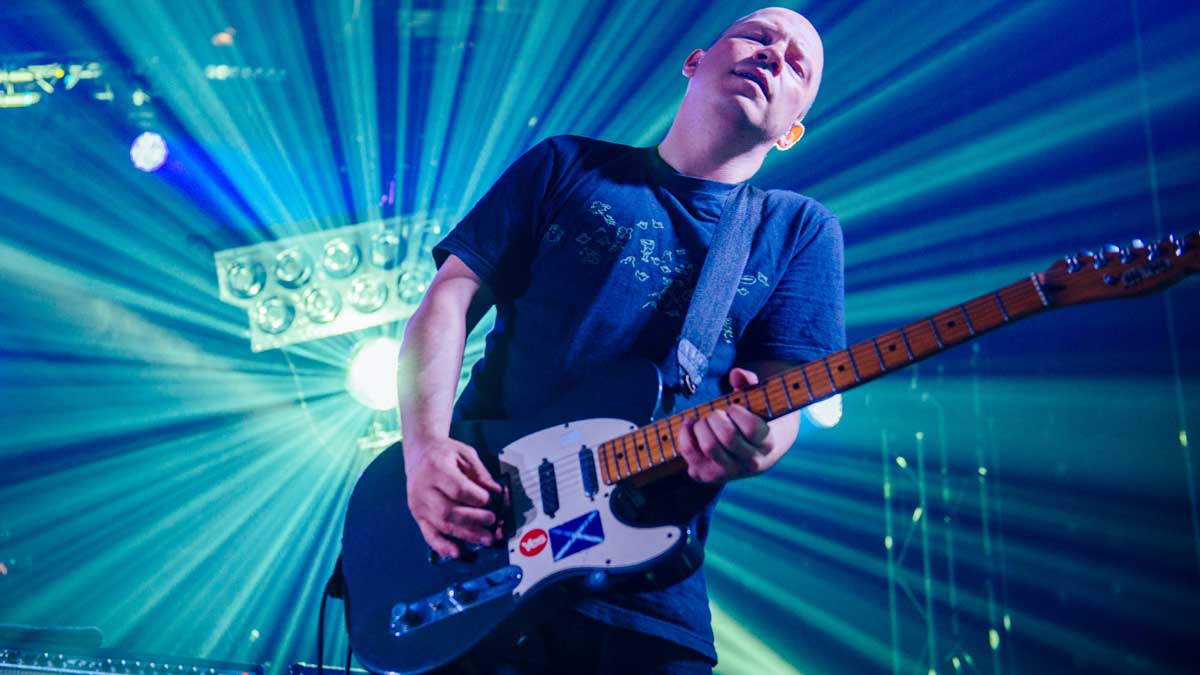
Although they're not overly enamoured of the genre description themselves, Mogwai have defined the sound of post-rock for a generation of fans, acolytes and emulators, and inspired some of the best experimental bands of the last 20 years - all while smashing out consistently brilliant music themselves.
Following hot on the heels of last year's excellent LP Every Country's Sun, the Glaswegian trailblazers have just released Kin, their soundtrack to the feature film of the same name.
"We've ended up making some music that we wouldn't have done, probably, off of our own backs. It's a challenge and it's a different way of adapting how we work," says founding guitarist Stuart Braithwaite.
Although Mogwai have scored several documentaries, this is their first full feature, and presented many exciting opportunities to work differently "in tone and in mood, and in speed, like I mean there's a really fast song on Kin that we wouldn't have done unless they hadn't wanted a really kind of euphoric rock song, so yeah, it's good to have different challenges and try things you wouldn't normally do."
As Stuart reflects on the band's career to date, we get the lowdown on the kit that he's used to create all those iconic records, and what has inspired his love of music.
"I love being able to do something that changes how people feel, and I love to experience something that I don't really understand. It's a bit of a form of magic in some ways. I'm a big fan [laughs]."
Makes sense to us. Let's jump right in...
Mogwai tour the UK in November, starting on 21 November in Glasgow.
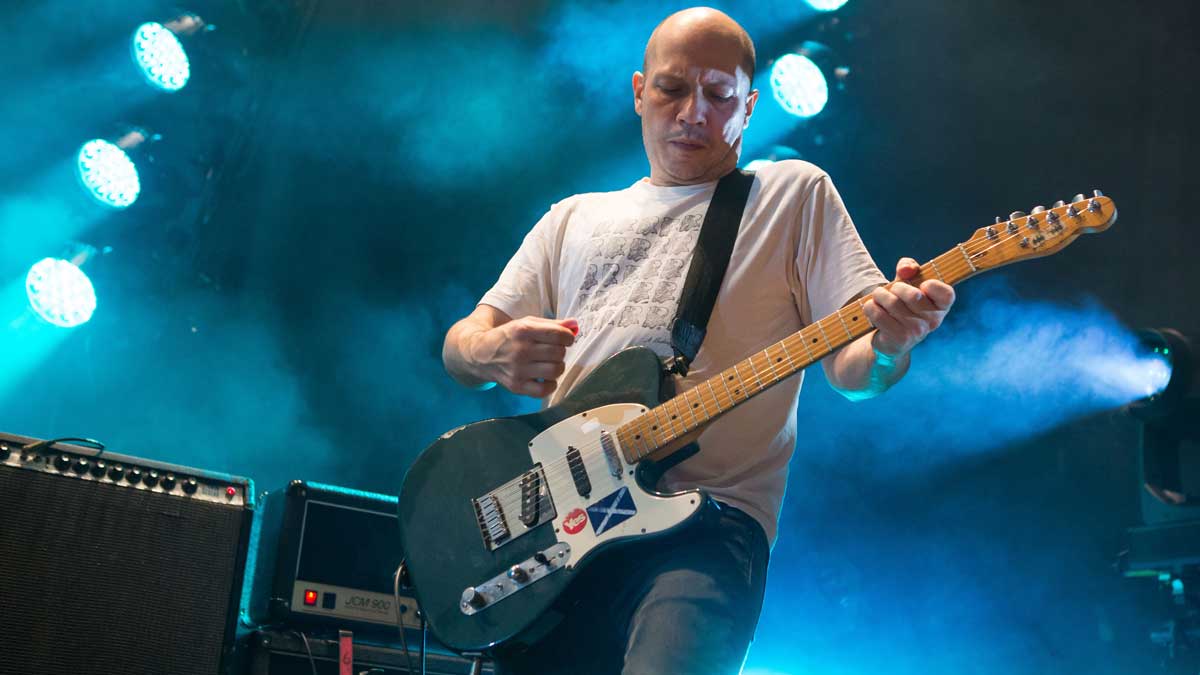
Fender Telecaster
"My Tele is the one I've had since I was a teenager; I think it's from the early 90s. I've got a Seymour Duncan pickup in it, so it's got a different kind of sound.
"[The Tele]'s the guitar I use all the time, although I have such a sentimental attachment to it I'm kind of starting to worry about taking it out on tour. I probably need to see if Fender can make me one the exact same, or something like that, which would be good.
"That was the only guitar I had for a long time - [Dominic Aitchison] didn't have a bass; he used to borrow a bass. He borrowed his brother's bass or something. Dominic has so many basses now, it's ridiculous. Just shows how time changes."
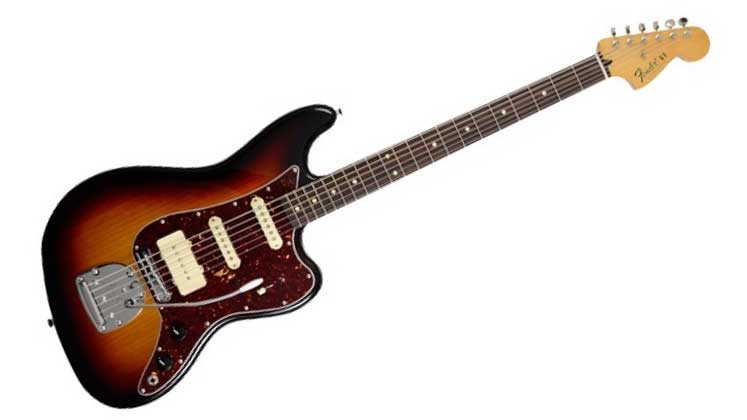
Fender Bass VI
"We've got quite a lot of cool old guitars. We've got a Gretsch Country Gentleman, and an early-'60s Fender VI Baritone. I use it all the time.
"It's in standard E through E, and we use it for loads of stuff. It's actually playing the main melody on We're Not Done, the last song on Kin.
"I'm a really huge Cure fan, and I guess that was always kind of a guitar I wanted, because Robert [Smith] played it on all the early records, Faith and Seventeen Seconds, and it's the guitar on the cover of The Cure In Orange live video, which I was obsessed with - I still am... we've got the Squier one and the regular reissue and they're great as well. They're really good guitars.
"I don't take the Gretsch away. We play so loud on stage that trying to use a hollow-bodied guitar would just be a nightmare."
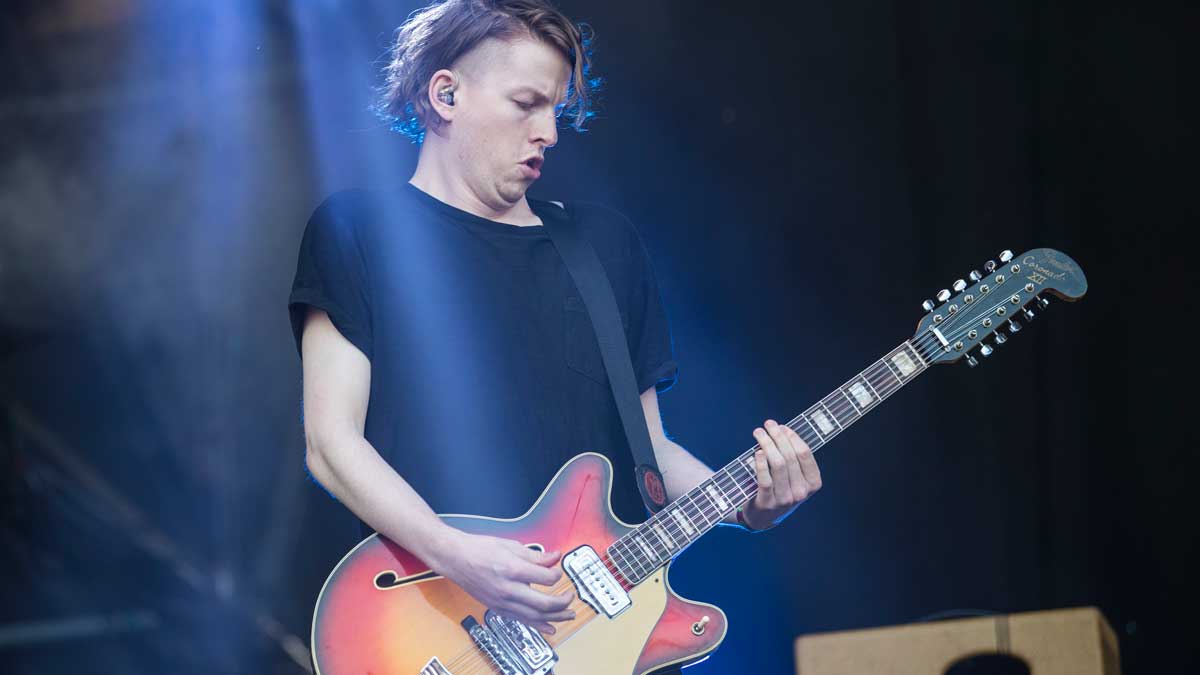
Fender Coronado
"Another guitar that I use a lot is the Fender Coronado. The reissue, they just used the name, it's a totally different guitar. I've actually got four of them.
"I think my Fender Coronado in Sunburst is probably my favourite guitar. It's really great. I've got, no, I've got three. I've got a green one, and I've got a twelve-string [pictured above]. Fun fact: I think they're all '67 or '68... [and] you know what, but they're not that hard to find actually.
"I have a lot of theories about guitars, and a lot of it is fashion-led, and Jazzmasters and Jaguars got really popular because of Nirvana and Sonic Youth and those kinds of bands, like, before that people weren't really interested. Every kind of guitar has an era that they're really sought after and really popular, and the Coronado just hasn't had that, because I think it's a really great guitar, but you can get them for less than a thousand pounds. They were the cheaper range at the time, but they're really cool guitars."
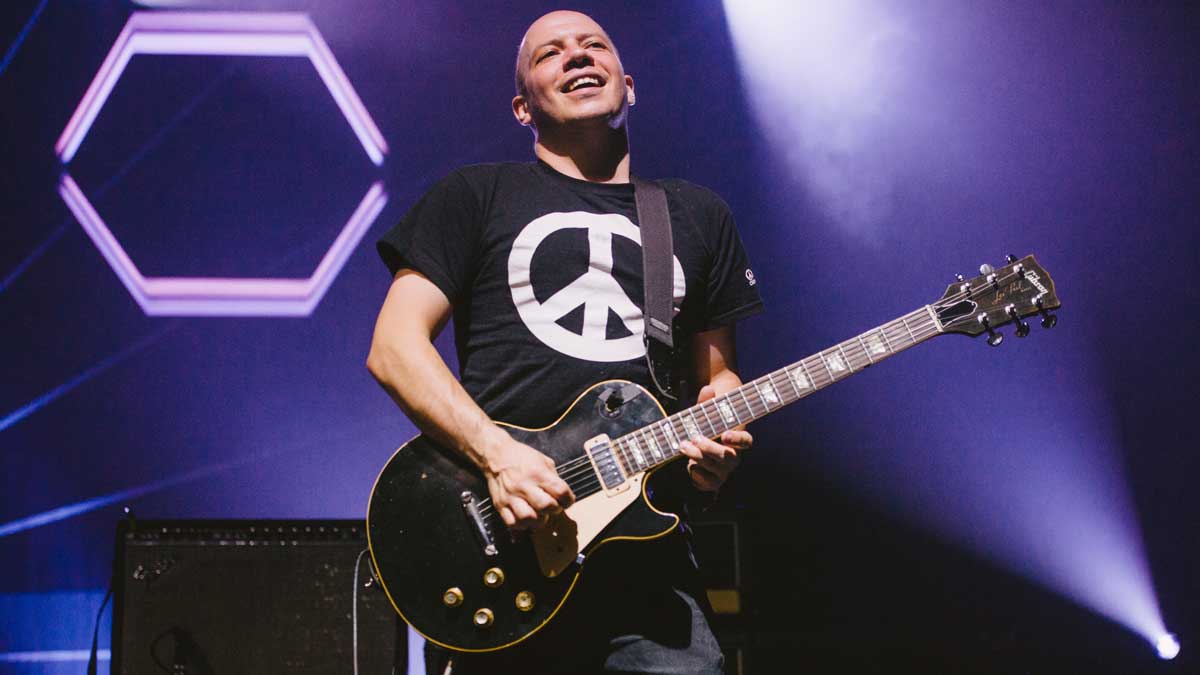
Gibson 1970 Les Paul Deluxe
"I usually mix up guitars; I've got a bunch I play depending on the sound of the song. I know for Kin, there's a lot of songs where we're using a violin bow with a load of delay for a lot of the weird noises, and for that, I used my 1970 Les Paul. It just resonates better. It's just a bigger-sounding guitar.
It weighs a ton - it puts my back out if I play it for more than a couple of songs a night
"I usually use Fenders, so I've got a Jazzmaster, a Jaguar and a Tele, and a Coronado. Those are the ones I'm using most of the time.
"My Les Paul is old, and that definitely feels different from new ones. Someone told me that's because they ran out of wood, and it's made of a certain kind of wood, but I know that it weighs a ton. It puts my back out if I play it for more than a couple of songs a night - it's a pretty wild guitar.
"It's from 1970. I do know that, because I put the serial number into a website. I got a good deal for that; it was pre-internet so I probably got it late-'90s, and they said it was mid-'80s, so they were obviously mistaken and I didn't pay a crazy amount of money for it, which is pretty cool. I've had it for almost 20 years."
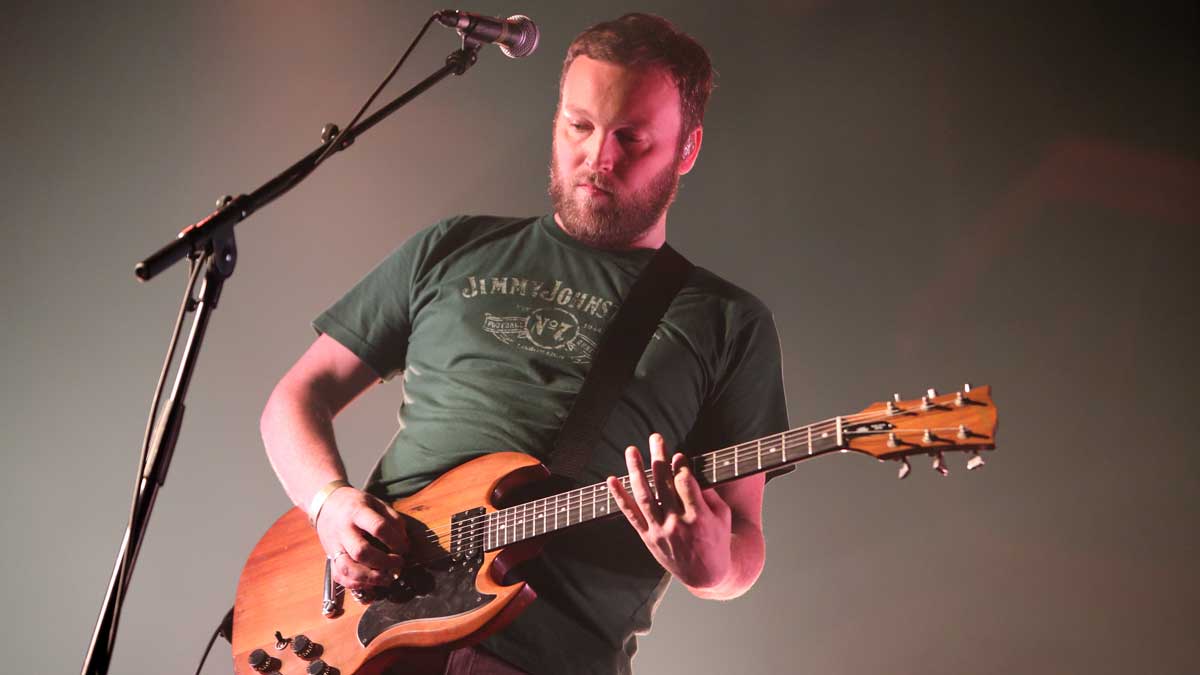
Gibson The SG
"It really depends on what tone you want. If you want something jarring, go for the Telecaster. If you want something really big, go for the SG; we've got a bunch of SGs.
"Barry plays the SG mostly, I think I've got one that's the same as his. He's gone totally OCD and has loads that are the same, and I've got one, too. It's called The SG and it's like a natural wood one.
"I actually got the Les Paul version of that, too; it's called The Les Paul. They're late-'70s, early-'80s. The SG one is great: it has a really big sound, [for] if you didn't want to use distortion but you wanted to have a really meaty sound to it."
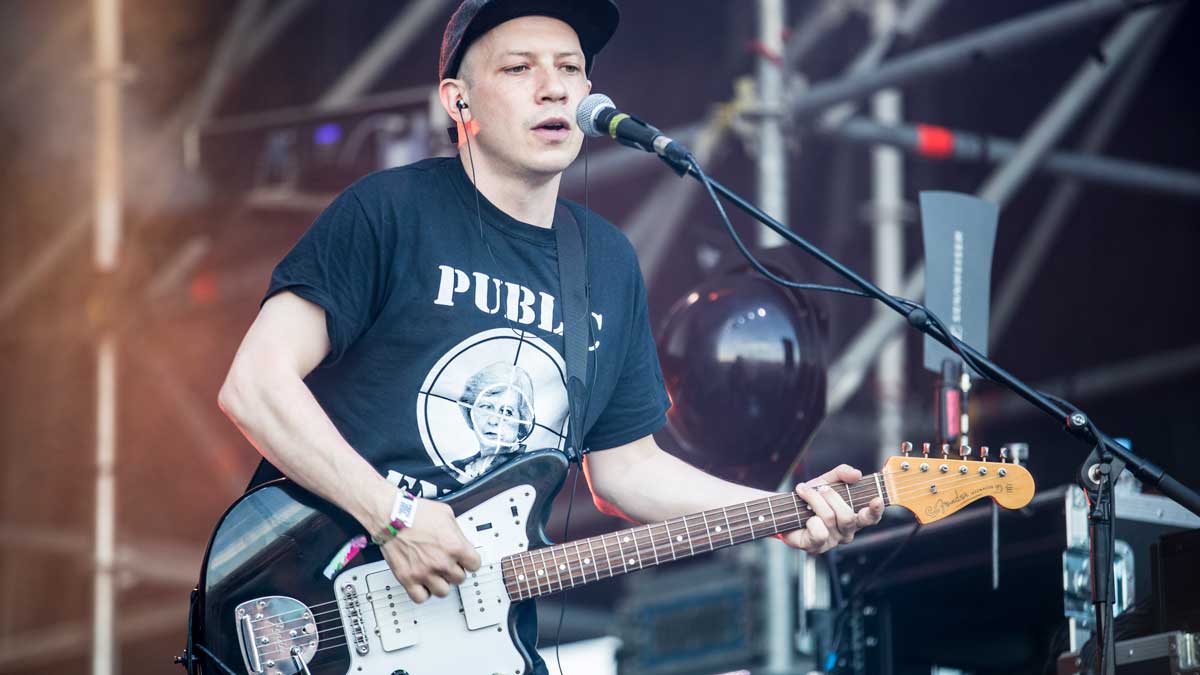
Fender Jazzmaster/Jaguar
"The Jazzmaster and the Jaguars are pretty recent ones, actually. An American Pro Jazzmaster and a Classic Player Jaguar. They're pretty good. I think the new Fenders are really great guitars.
"I've only recently got into those guitars; I've tried a few really old ones in shops - they've been good, but not substantially different enough to not make me play the new ones, which is interesting."
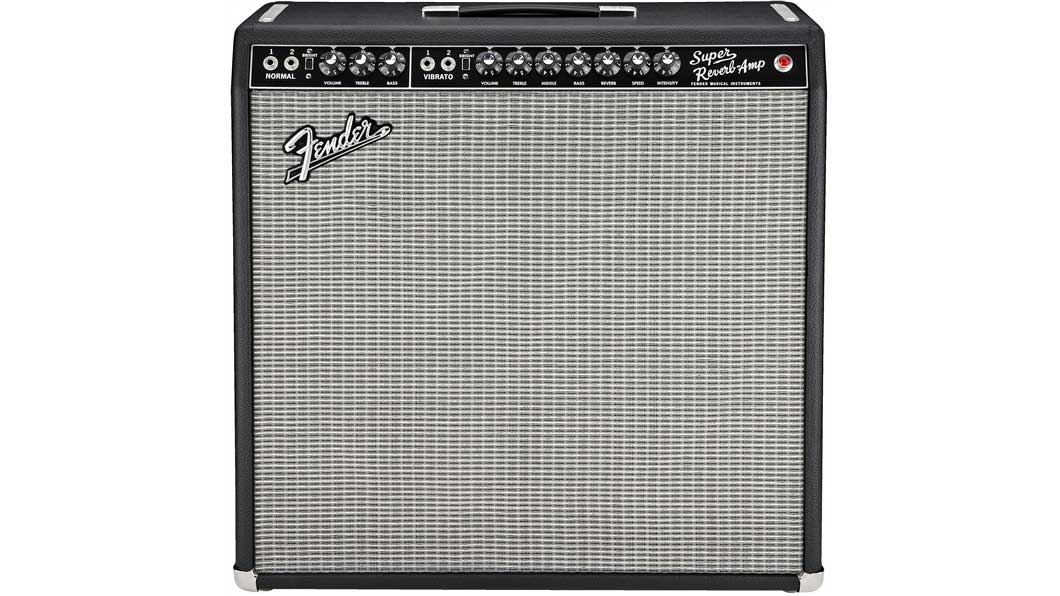
Fender Super Reverb
"I usually play through a Fender Super Reverb in the studio.
"It depends on the song; for the soundtrack stuff, I almost always use the Fender, but when we were making the last album, Dave Fridmann, who we were recording with, would switch the amps up a lot. So to be honest he was in control of that. He's got a ridiculous amount of amps."
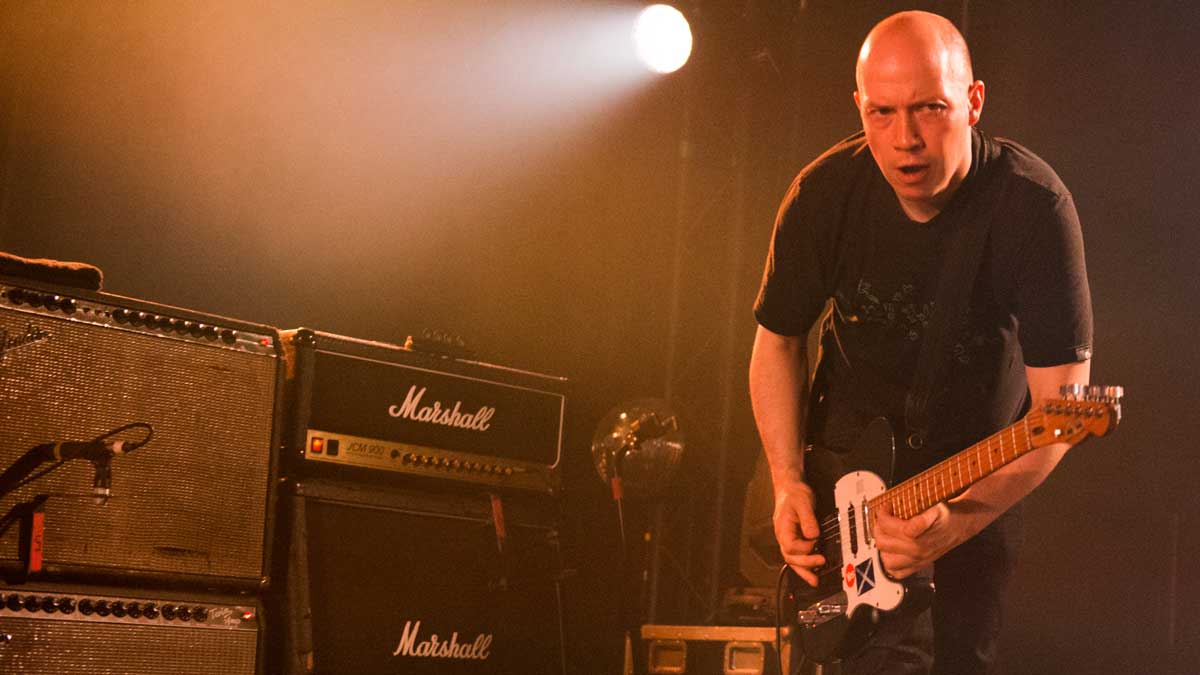
Marshall JCM900
"[Live] I use two amps at once: a Marshall and a Twin. JCM rings a bell. It's really loud, that's all I know [laughs]. I've always used a Twin.
"I used an Orange for a while, but yeah, I've kind of settled on the Marshall. The other one's broke, I probably blew them up; that's probably what happened, I think [laughs]. It's just an alternate sound. The Fender sound is crisper and more cutting and then it's rounded off by the beefiness of the Marshall."
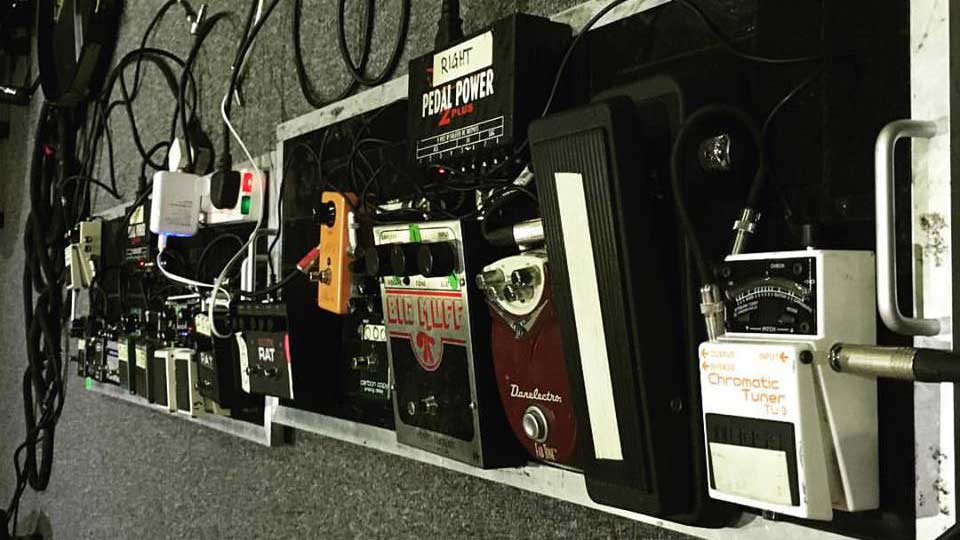
Danelectro Fab Tone, Electro-Harmonix Big Muff
"I've got a Danelectro Fab Tone, that's my main fuzz, I've used that for a long time. I also use a Big Muff.
"Actually, I'm using two different Big Muffs just now because they brought out a really great one. One's the Russian one [Green Russian reissue], the other is the orange-and-white one, the Billy Corgan one [Op Amp Big Muff reissue].
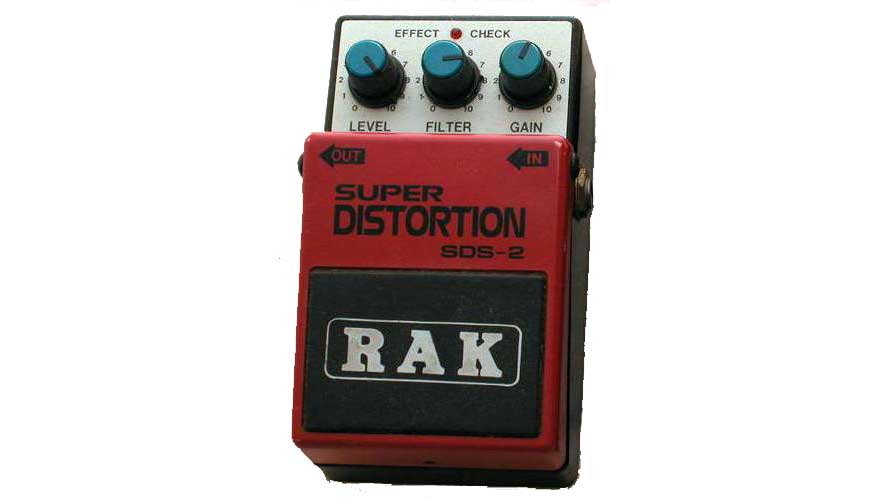
RAK Super Distortion
"The Fab Tone I've been using for a very long time, and there's another one that I always used to use but don't take on tour, which is a RAK Super Distortion and I used that a lot.
"That was one of the first pedals I bought; it was a proper cheapy pedal but it just has a really insane tone to it. It's a really gnarly pedal - it's really great.
"RAK was a really cheap pedal company - they were proper 25-quid pedals in the '90s."
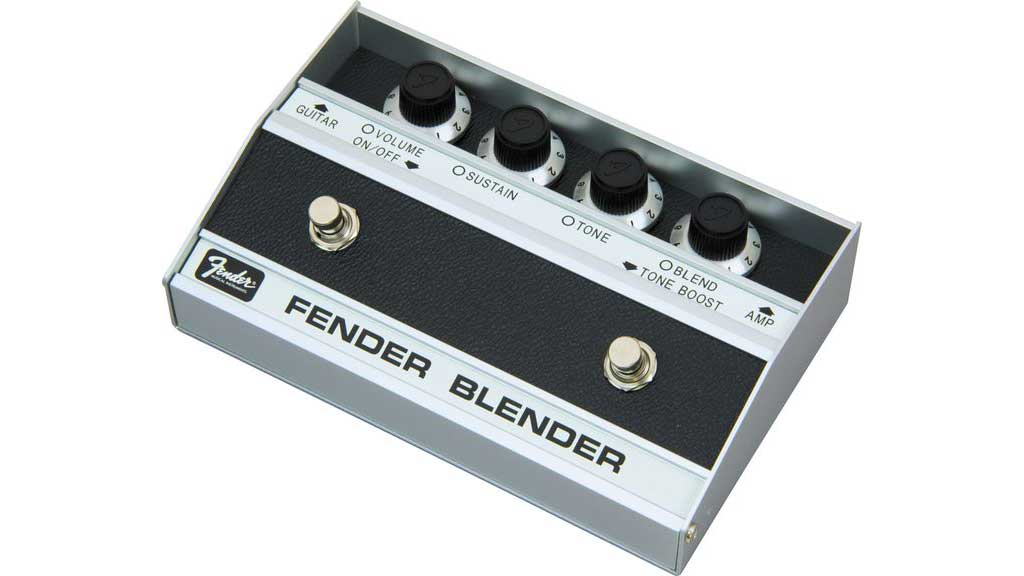
Other fuzzes
"I've also got another fuzz which I use for my quieter fuzz, which I think is a Reuss. I think it's a Danish company, I've bought a few things from them, and it also has a tremolo effect which is really cool.
"That's a live thing, if the song requires the guitar to be distorted but not the loudest thing on the stage, then I'll use that one and just set the level. In the studio, we'll just try things. We've got drawers full of pedals and we'll just try them until something sounds good.
"On the last album, I used a Fender Blender a lot, which I got relatively recently. I love the Fuzz Face as well; that's another pedal I use a lot."
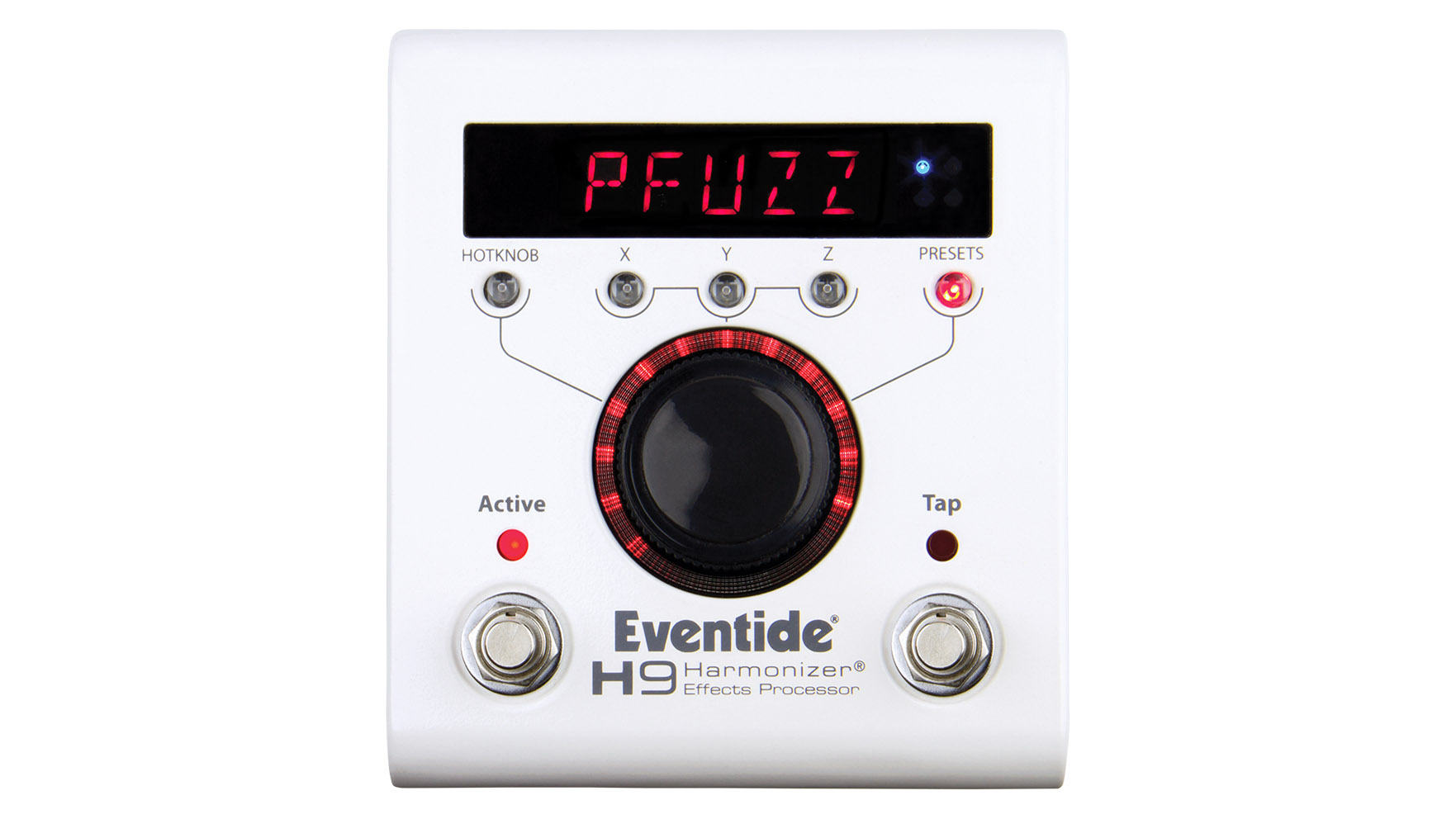
Eventide H9
"I've got an Eventide H9 pedal, so we'll try a lot of that in the studio and just go through different ideas and see how it sounds with different songs.
"It's a lot of trial and error, seeing what sounds good and going from there. Sometimes something will just happen, completely unexpected and it'll work out really well."
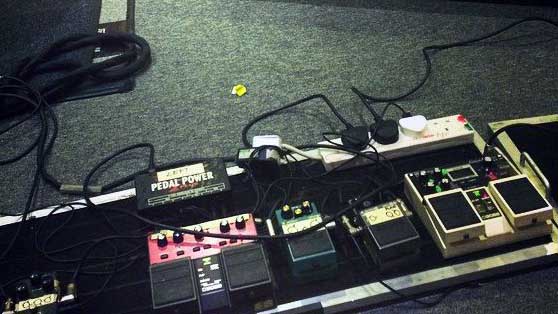
MXR Carbon Copy, Boss DD-20 and RV-3
"I use quite a lot of the Dunlop stuff. I've got an MXR delay and a phaser, the Carbon Copy. I use the Boss DD-20 quite a lot; that's a really solid delay.
"I've got a Boss digital reverb as well. A tremolo, I think that's a Boss one. I've got an RV-3, but I don't know if that's the one on the 'board.
"The good thing about those is they keep working. They're pretty solid pieces of equipment, which when things are being carted around non-stop is pretty important, because you don't want to be playing a gig in Kuala Lumpur and not have a delay that works, y'know, when it might be tricky to find one in a store."
Alex Lynham is a gear obsessive who's been collecting and building modern and vintage equipment since he got his first Saturday job. Besides reviewing countless pedals for Total Guitar, he's written guides on how to build your first pedal, how to build a tube amp from a kit, and briefly went viral when he released a glitch delay pedal, the Atom Smasher.
